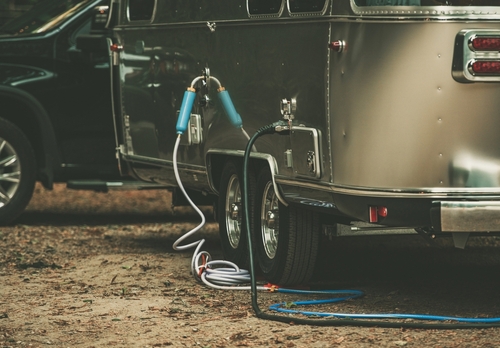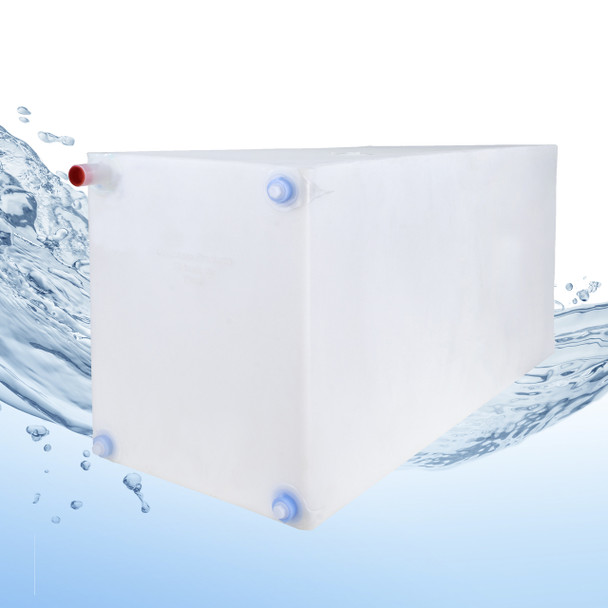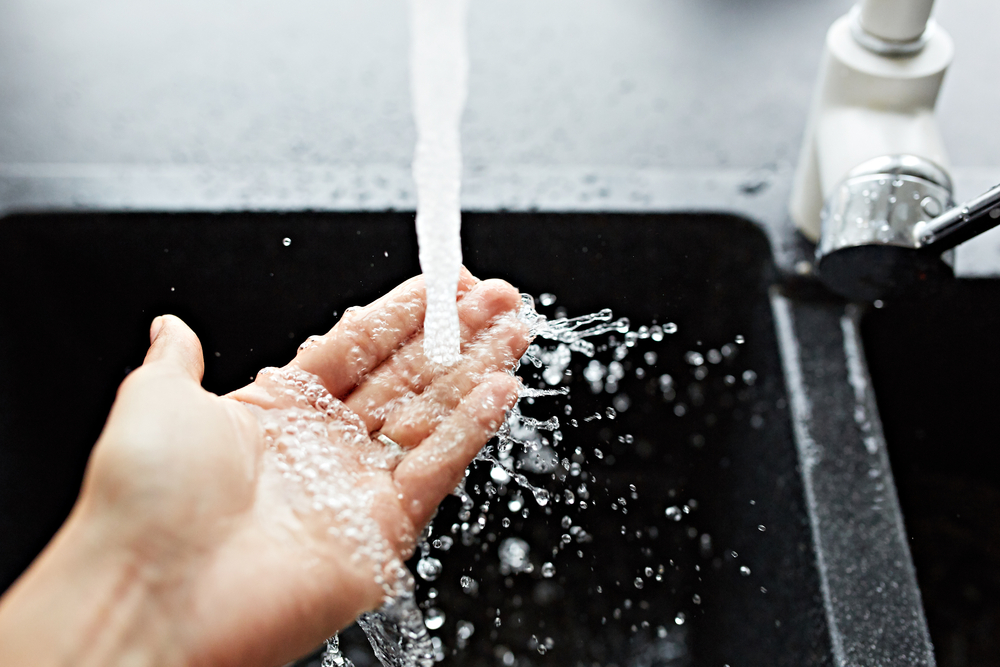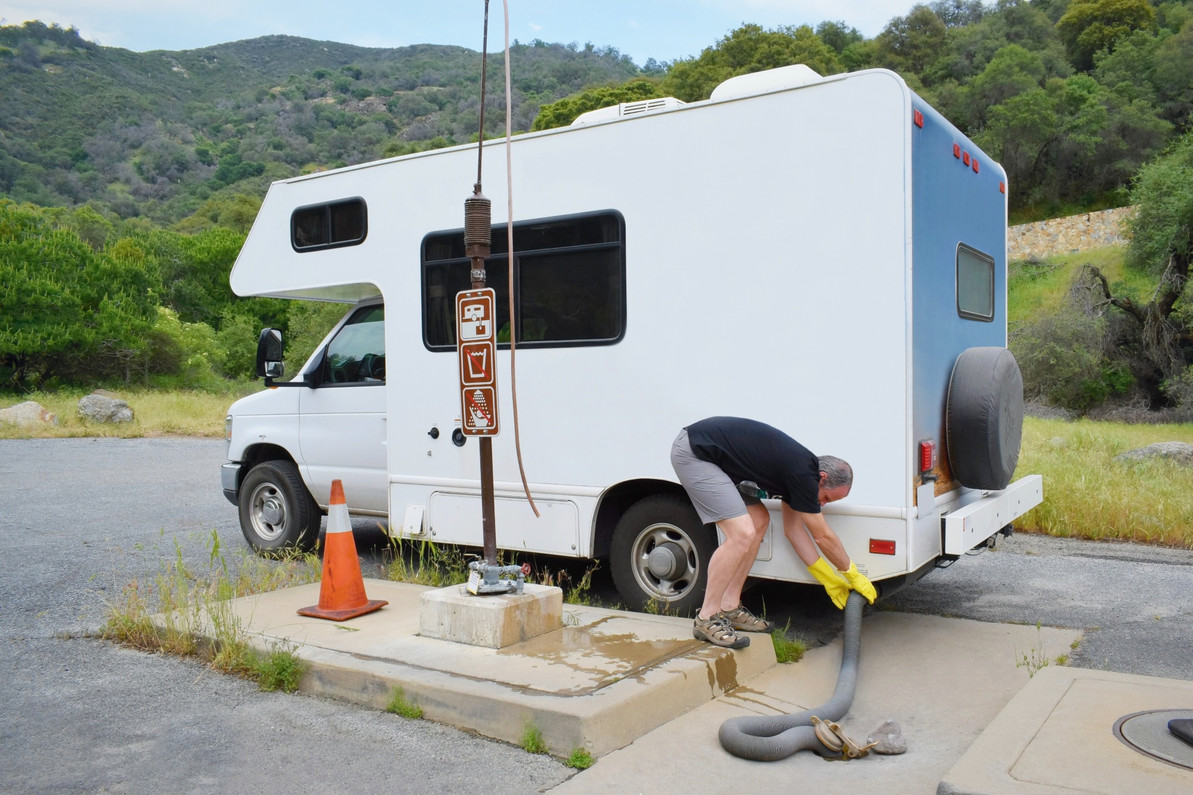The Importance of RV Holding Tanks
RVs are designed to allow you to bring the creature comforts of home along with you on your travels. Redesigning systems to be mobile even though they were originally intended to remain stationary takes a lot of effort. In past blogs, we discussed how electrical systems, refrigerators, and even toilets have been modified to accommodate travel. In this article, we will be discussing RV freshwater and septic systems.
RV Freshwater System
Like any home, RVs typically have a system to provide fresh, running water that is safe to use for drinking, cooking, bathing, and flushing waste. The freshwater supply in stationary homes comes from a permanent connection to the city water system or a private well.
But in RVs, a permanent connection like those found in stationary homes would defeat the entire purpose of owning a motorhome. While RVs can utilize a city water connection if available, they are also equipped to carry your freshwater supply on board during your travels.
City Water Access
Most RV campgrounds will have at least partial hookups for you to use while camping, including only water and electricity. In addition to electrical and water, having sewer and cable hookups would be considered a full hookup. When you are connected to a city water connection, you have unlimited access to water in your RV, but that doesn’t necessarily mean you should use it that way. As we’ll discuss in the following section, that wastewater has to go somewhere, and that somewhere is a limited capacity holding system in your rig.

To access city water at the campground, you must connect your RV to the city water hookup using the appropriate equipment and the correct valve. You shouldn’t just use any old hose for this connection; it should be specified as safe for drinking water and rated for high pressure. Potable water hoses are free from lead, BPAs, and phthalates, so there is no chance they will deposit these harmful chemicals into your water. The city water connection valve is easy to identify as most RVs have them clearly labeled as such. Many RVers attach a water filter between the city water pump and their RV’s fresh water system for additional peace of mind.
Fresh Water Holding Tank
When access to a city water connection is unavailable, most RVs have a backup option so that you can still utilize running water. This comes in the form of a freshwater holding tank. Freshwater tanks are connected to your RV plumbing systems with a pump to ensure adequate flow.  The sizes of these tanks can vary depending on the size of the RV and anticipated usage. Campers who intend on spending the majority of their time at campgrounds with full hookups can get by with smaller holding tanks because they won’t likely need to use them often. On the other hand, campers who spend most of their time boondocking or dry camping will have more significant water storage capacity needs.
The sizes of these tanks can vary depending on the size of the RV and anticipated usage. Campers who intend on spending the majority of their time at campgrounds with full hookups can get by with smaller holding tanks because they won’t likely need to use them often. On the other hand, campers who spend most of their time boondocking or dry camping will have more significant water storage capacity needs.
When it comes to RVs, weight management is an essential component of loading your camper safely. The Gross Vehicle Weight Rating (GVWR) refers to the maximum recommended net weight, which is the sum of the unloaded RV weight plus the cargo carrying capacity. Cargo carrying capacity is anything you load onto your RV, which includes everything from clothes to camping equipment to the water you store in your holding tank. It is imperative to consider the weight of your holding tank because water can be quite heavy! Water weighs about 8.3 lbs per gallon. And if you are filling up 75 gallons of water for a long trip, that will add about 622 lbs to your gross vehicle weight.
RV Septic System
Septic systems are used in residential homes when access to the city sewage lines is unavailable. A septic system provides basic sewage treatment by separating solids from liquids and enabling the anaerobic breakdown of organic waste by bacteria. Your RV’s “septic system” does not provide waste treatment, only waste storage.  There are typically 2 separate holding tanks for wastewater, but smaller RVs may only have one. In this case, all wastewater would be stored in the same location.
There are typically 2 separate holding tanks for wastewater, but smaller RVs may only have one. In this case, all wastewater would be stored in the same location.
It’s essential to remember that all water used in your RV, whether from a city water connection or your freshwater holding tank, will end up in one of these 2 holding tanks unless you have access to a sewer hookup as well. Sewer hookups are becoming more available, but that really depends on where you are camping.
Gray Water Tank
The gray water tank stores wastewater from your sinks and showers and possibly a dishwasher or laundry machine if you have them. Gray wastewater typically contains trace amounts of food, grease, dirt, hair/skin particles, and household cleaning products, which can potentially carry harmful bacteria and viruses. While gray wastewater may be a little smelly and is no longer safe to drink, it does not pose the same health risks as black water and is not usually considered a biohazard.
Black Water Tank
The black waste water tank has one of the most important jobs in your RV and the least glamorous. The black tank is responsible for collecting toilet wastewater and your contributions and keeping the raw sewage safely contained until it can be dumped at an approved septic station. Raw sewage is considered a biohazard and is thus held to specific disposal standards and protocols. Biohazards refer to organic substances that pose a health threat to humans due to high concentrations of bacteria, viruses, and other potentially harmful microorganisms that can cause infection due to exposure.
Cleaning & Maintenance
Regular cleaning and maintenance are imperative both to the proper functioning of these systems and to your personal health and safety.

You want to ensure that your drinking water isn’t contaminated in your freshwater holding tank due to bacteria or mold growth. Regular flushing of your freshwater system and a seasonal deep clean can help keep your drinking water tasting and smelling fresh.
Regular cleaning of the wastewater tanks will help ensure uninhibited flow through the system and prevent clogging or backups. Some holding tanks will have sensors inside that let you know the level inside of the tanks. While these can be helpful, if the tank is not regularly cleaned, waste can build up on the sides and affect the functioning of the sensors. You should always remain cognizant of how much water and waste is on board in your holding tanks, as it is your responsibility to fill and empty these depending on use.
Recent Posts
-
How To Keep RV Furniture From Peeling
Peeling RV Furniture | Why it Peels and How to Stop it Your RV furniture is a point of pride on …Apr 23rd 2024 -
4 Tips for Securing RV Furniture While Traveling | RecPro
How To Secure RV Furniture There are few things that beat going out on an adventure with an RV …Apr 11th 2024 -
Can You Put Regular Furniture in an RV?
Can you put regular furniture in an RV? Many new and old RV owners ask themselves this qu …Apr 8th 2024 -
Are RV Electric Fireplaces Safe
Being Safe in Your RV with an Electric Fireplace Safety is always going to be one of your highest …Apr 4th 2024 -
How To Install An RV Fireplace
A Warm Addition to Your On-Wheels: The DIY RV Fireplace Installation Guide Many RV enthusiasts ask …Apr 1st 2024 -
Essential Grilling Gear Every RVer Needs
Whether or not you consider yourself a pitmaster or grillmaster, if you’re out on the road with y …Mar 18th 2024







